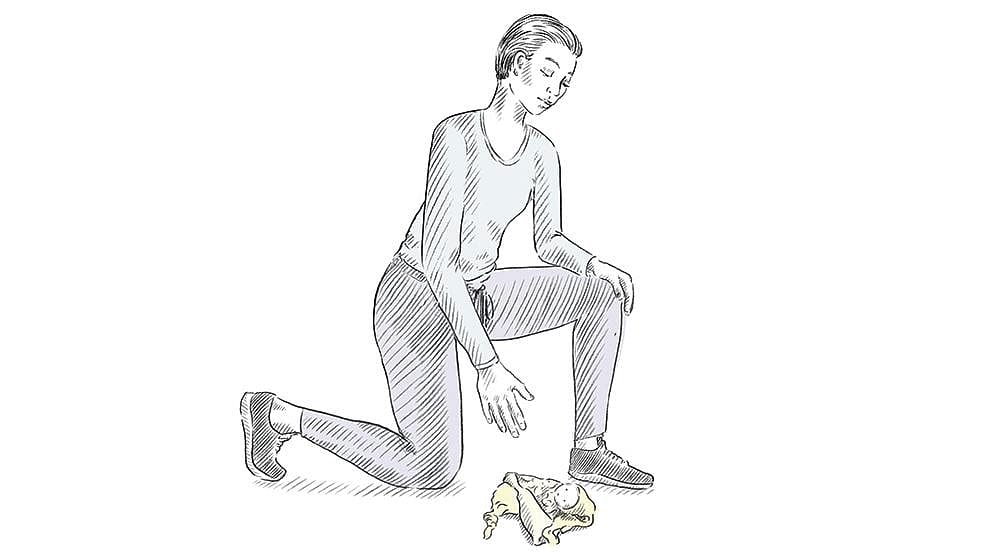Take time to rest in bed and go easy on your pelvic floor.
How to strengthen your pelvic floor
The pelvic floor surrounds and supports, contracts and releases. Midwife Anja Constance Gaca explains how to strengthen and maintain your pelvic floor muscles.
During the postpartum period
Take time to rest in bed and go easy on your pelvic floor. If you experience a feeling of pressure or a sinking feeling in the pelvic floor, inverted positions help relieve the strain, such as lying on your back with your legs propped up and your pelvis raised. Do not lift or carry anything heavier than your baby. Carry your baby close to your body in a babywearing wrap, sling or other baby carrier.
Standing up
To stand up from a reclining position, roll over to one side and use your hands to push yourself into an upright position. Slide forward to the edge of the chair or bed when standing up. Lean slightly forward. Tighten the pelvic floor, swing your arms, and press your feet into the ground to help you stand up.
Sitting down
Move your legs close to the edge of the chair. Keep your spine long; try not to sink into a rounded (concave) position. Activate the pelvic floor and push your buttocks far back into the chair when sitting.
Standing
Stand with your feet hip-width apart. Distribute your weight evenly on both feet. Stand with your spine long and look straight ahead. Avoid excessive curvature of the lumbar spine (swayback); try to maintain a level pelvis and neutral position of the spine.
Using the toilet
In the first days after birth, it is not always easy to notice when your bladder is full. Therefore, make an effort to go to bathroom regularly.
Sitting on the toilet
Sit up straight with your legs hip-width apart. For bowel movements, a slightly rounded posture, with the knees slightly elevated above your hips, is recommended; resting your feet on a little footstool helps. When urinating or defecating, relax the pelvic floor muscles, but avoid pressing or straining.
Coughing and sneezing
When coughing or sneezing, do not take a rounded or bent-forward posture. Stay upright, turn your upper body to the side and cough into the crook of your arm.
Pushchairs
When pushing your baby in a pram, grasp the handle with your hands from below. This will help you walk more upright.
Move your hips
Several times a day circle your hips to loosen the muscles. This will draw your awareness to your pelvic floor area again. Activate your pelvic floor by squeezing and lifting in the muscles around the pelvic openings: around the vagina; around the urethra (as if to stop the flow of urine); and around the anus (as if to stop passing wind). Imagine lifting your buttocks up into your body. Try combining tightening and lifting of the muscles with a movement; this trains all three layers of the pelvic floor. These pelvic floor exercises can be done in all positions: while lying down on your back or stomach, while sitting, standing as well as on all fours in a quadruped position. Practise rhythmic, quick contractions; also practise a slow squeeze, hold and release, gradually increasing the length of the hold, also during the movement.
Postnatal exercise course
Remember to sign up for postnatal exercise courses – ask your midwife, doula or physician. If possible, visit the course without your baby, so you can fully concentrate on yourself.
Tips for core fitness for the postpartum period and beyond:
thecenter.tv
cantienica.com (Website in English, French, German, Lithuanian, Spanish)








